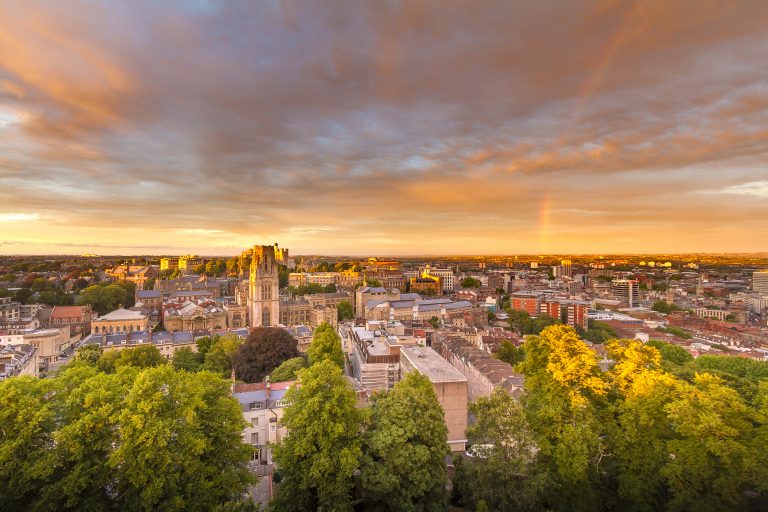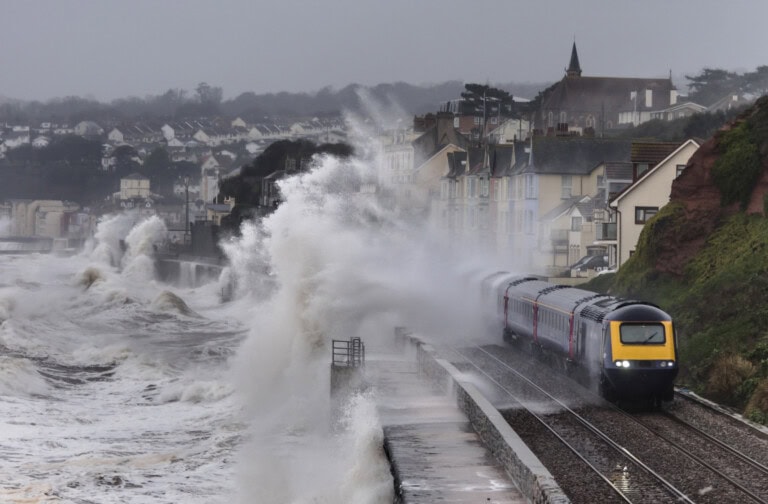Setting a new route for the built environment to become climate resilient and maximise environmental net gains

Shouldn’t there be panic on the streets? … we’re now in the midst of two major crisis – one climate and one ecological. But if you look around, it’s still business as usual. It’s as if we’ve fallen asleep at the wheel of a self-driving car, cruising along a fixed route towards a cliff edge. We‘ve not yet taken the required action to grab hold of the steering wheel and swerve off this course. According to IPBES (2019), the current trajectory means we’re unlikely to meet the Paris Agreement on Climate Change, the Aichi Biodiversity Targets and the UN Sustainable Development Goals. This may well be the cliff edge; — a tipping point from which we cannot return.
Risk and Resilience
In response to these risks, last month, The Developer brought together 200 development directors, architects, local authority planning and regeneration teams, scientists and sustainability experts at their Risk and Resilience conference. They focused the conference on how to design for a climate emergency and create resilient cities though the use of nature-based solutions. The event included speakers from UKGBC members Berkeley Group, Grosvenor, University College London and Greengage who all discussed how they’re already embedding adaptive solutions into their businesses.
We were delighted to kick-off the event by unveiling UKGBC’s new ambition for the built environment on climate resilience and enhancing nature. The ambition statement was created by UKGBC in collaboration with our members and other key stakeholders with the intention of galvanising industry and political action in responding to the climate and ecological crisis. It sits alongside the existing Net Zero Carbon Buildings Commitment which requires buildings to be net zero carbon by 2030. Find out more here.
Sector ambition statement:
By 2030, all buildings and infrastructure will, throughout their lifetime, be climate resilient and maximise environmental net gains, through the prioritisation of nature-based solutions.
UKGBC has a vision for a built environment that enables people and planet to thrive. This includes by “adapting to climate change” and “embracing and restoring nature and promoting biodiversity”. See here for the short report in which we present the statement and make the case for why industry needs to rally around it.
We hope that through setting and communicating a time bound and measurable ambition for these topics we will catalyse the required response from the built environment value chain and policy makers. Further work will be required to identify and undertake the exact interventions and actions required to fulfil the ambition and we look forward to working with members and other stakeholders to achieve this. If you would like to partner with, or support, the delivery of this work, please do let us know.
Industry initiatives
The industry is showing early signs of waking from its slumber at the wheel of the car.
An example of this is the €4.5 million UIA backed IGNITION project. A collaboration of 12 partners (including UKGBC) from local government, NGOs and business working together to develop innovative financing solutions for investment in Greater Manchester’s natural environment. It aims to create a 10 percent increase in Greater Manchester’s urban green infrastructure coverage by 2038. This investment will help to build the city region’s ability to adapt to the increasingly extreme impacts of climate change.
Another great initiative is the Wild West End project, made up of a collection of some of the West End’s largest property owners including UKGBC members Grosvenor, The Howard de Walden Estate and The Crown Estate, with advice from Arup. Green infrastructure is selected which meets at least two elements within a multi-functional matrix for the project, which includes priorities for rainwater retention and reuse, and large trees or green walls to provide shading.
A roadmap for the sector
The ambition is a new destination for industry, and now we must plan the route.
We believe the next step is for UKGBC, in collaboration with our members and other key stakeholders, to develop a roadmap, which outlines the challenges and identifies the required interventions for achieving the ambition. This roadmap will provide a narrative on how the built environment can meet the ambition and the role each stakeholder can fulfil.
We are currently identifying partners to fund and work with us to develop this roadmap and associated guidance. Please contact Alastair Mant or Robert Winch to find out more.
In January we’re hosting a Universities Research Forum to better understand the research on funding models for nature-based solutions. This is will help inform the creation and development of our roadmap as well as feed into the IGNTION project, sign-up here.
See our report ‘Climate resilience and embracing nature: An ambition for the built environment’ here.
Find out more about our work on Climate Resilience here.
Find out more about our work on Nature and Biodiversity here.
Please contact Robert Winch if you would like to join our climate resilience or nature and biodiversity interest group.
Related
Storms, climate change and how we make our cities resilient

Sustainable Construction for the Sustainable Development Goals

Fixing the Competency Gap: Moving Beyond Qualifications in Domestic Retrofit

UKGBC Members visit Coal House in Cardiff

